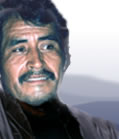 |
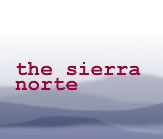 |
||
 |
|||
| LOCAL THEMES agriculture communications conflict development economics education employment and income environment family life festivals forestry gender health identity justice and crime livelihood strategies migration politics social change social institutions spiritual beliefs tourism traditional skills water BACKGROUND OTHER LOCATIONS |
introducing the area
Several narrators express deep concern about indiscriminate tree felling, mentioning the impact on water supplies and rainfall, as well as over-exploitation of wildlife and other resources. The Zapotec have traditionally a strong bond with their natural environment, in which religion plays a significant role. The "lord of the mountains", a Zapotec deity known as Guzio, is said to live within the Sierra Norte, and to take care of mountain people, some of whom are now striving to preserve the remaining forest. the themes
Central to these communities' organisation is the cargo system, under which members take on various civil and religious responsibilities, usually for a year or so. Several narrators mention starting with lower-level cargo positions as young as 14. Higher- level positions bring more status, and are carried out by only a handful of citizens. Cargo positions are unpaid, providing free services to the community. Most narrators are aware that these self-help services are fundamental to the operation of the community. As Miguel of Ixtlán explains with quiet pride: "One of the things valuable to the community is its customs, and own style of self-governing. This is the foundation for the strength of the village." The obligation to perform tequio, a form of communal labour for specific tasks of benefit to the wider community, is also still recognised. A continuing sense of identity and community responsibility is tested by migration (often to the USA), which has become a way of life. Modern culture and expectations exert a powerful influence, especially on the young, and many narrators comment on the growing tension between modern and traditional ways of life. Several reflect on the conflict and opportunities this presents. Mario Fernando, who went to university and worked in Mexico City, has returned to his original home. Fully committed to Yavesía's values, he nevertheless ruefully admits: "It is difficult to re-accept the principles of the village when it basically says that the good of the community comes before you, isn't it?"
Striking a balance - between individual advancement and collective responsibility, between protecting their environment and traditional culture and taking up economic opportunities - is a fundamental concern of these narrators. Such dilemmas are coming ever closer to the residents of Tiltepec. As they eagerly awaited the completion of the (untarmacked) connecting road, they knew that access to markets and improved health and education facilities would come at a price. The far hillside already bore the scars of the construction and heavy machinery, but they were in no doubt that the "most important thing is that [the road] gets here, yes, so we don't have to walk, carrying our goods…". the partnersWWF Mexico's regional office in Oaxaca coordinated the project in partnership with SERBO, a local organisation dedicated to the study of the state's natural resources, and the preservation of related indigenous knowledge. Three members of SERBO's ethnobotanical team at the time - Judith Leticia García Rodríguez, Rafael García Soriano and Juan Carlos Flores Vázquez - interviewed narrators with whom they had long been working, documenting local knowledge. Members of each community also trained and worked as interviewers: Bernardino Montaña Mendoza, Gil Hernández Montaño (Tiltepec); Fernando Ramos (Yavesía); Angel Pérez Pacheco, María de Jesús Pérez Ramírez (Ixtlán) and Silvio Martinez, Jairo Torres Perez, Carlos Yescas Hernandez, Armando Mendez Yescas, and Zoila Yescas (Ixtepeji). Peter Newborne of WWF-UK and Gloria Tavera and Rocio Heredia Diaz of WWF Oaxaca managed the project, and in 2001, a booklet based on the testimonies was distributed to all those involved. After incorporating their feedback, WWF Oaxaca published Voces de las montanas: testimonios orales de la Sierra Norte de Oaxaca in 2002. It was distributed to conservation organisations, community and public libraries, environmental and social research institutes in Oaxaca and Mexico City, NGOs, government institutions and the communities themselves. Copies were also distributed at an awards event in November 2002 where three of the communities were recognised for their conservation efforts. A PDF version of this booklet is accessible on this site. publications
|
|||||||||
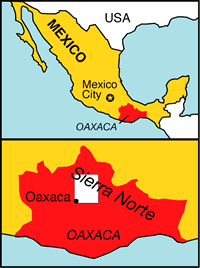
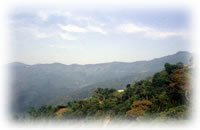 The mountain range is also home to several ethnic groups, including one of the country's most important: the Zapotec. The narrators come from four Zapotec communities. Ixtlán is the largest and most prosperous, closest to the city of Oaxaca de Juarez, and with the beginnings of a community-run ecotourism centre. San Miguel Tiltepec is the smallest, poorest and most remote, at the time of testimony collection not yet linked by road to its neighbours. A key economic activity is coffee cultivation. Santa Maria Yavesía and Santa Caterina Ixtepeji (with the hamlets of La Cumbre and Las Animas), are less isolated, and while most residents remain small farmers cultivating staple crops, they also benefit from small enterprises such as carpentry, fish-farming and flower cultivation.
The mountain range is also home to several ethnic groups, including one of the country's most important: the Zapotec. The narrators come from four Zapotec communities. Ixtlán is the largest and most prosperous, closest to the city of Oaxaca de Juarez, and with the beginnings of a community-run ecotourism centre. San Miguel Tiltepec is the smallest, poorest and most remote, at the time of testimony collection not yet linked by road to its neighbours. A key economic activity is coffee cultivation. Santa Maria Yavesía and Santa Caterina Ixtepeji (with the hamlets of La Cumbre and Las Animas), are less isolated, and while most residents remain small farmers cultivating staple crops, they also benefit from small enterprises such as carpentry, fish-farming and flower cultivation.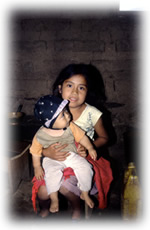 Although several older narrators perceive a decline in the indigenous language, and recall how teachers
Although several older narrators perceive a decline in the indigenous language, and recall how teachers 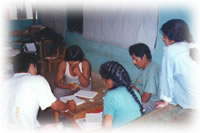 Women have the most positive comments to say about social change, which has brought greater freedom to take up education and
Women have the most positive comments to say about social change, which has brought greater freedom to take up education and 
